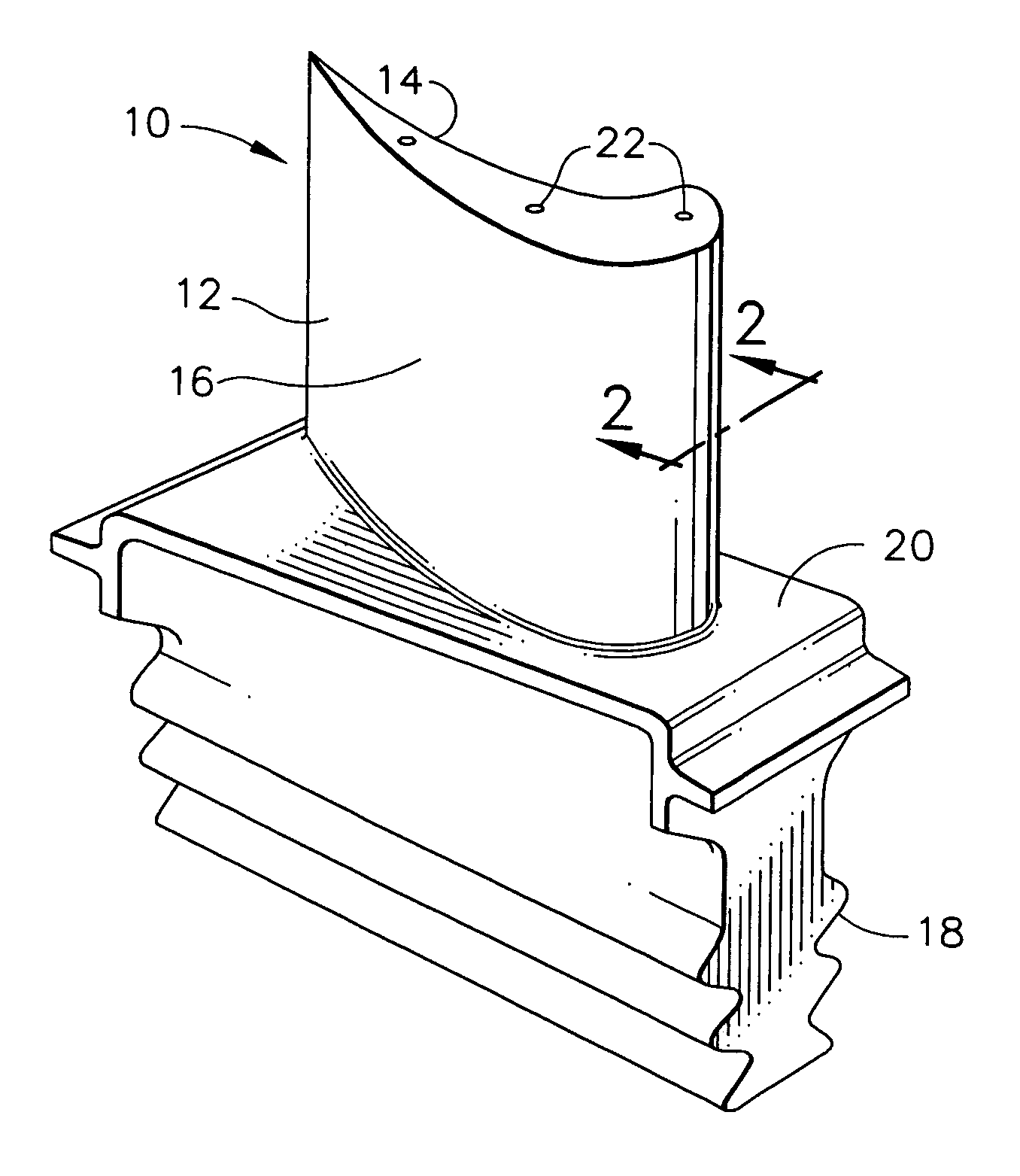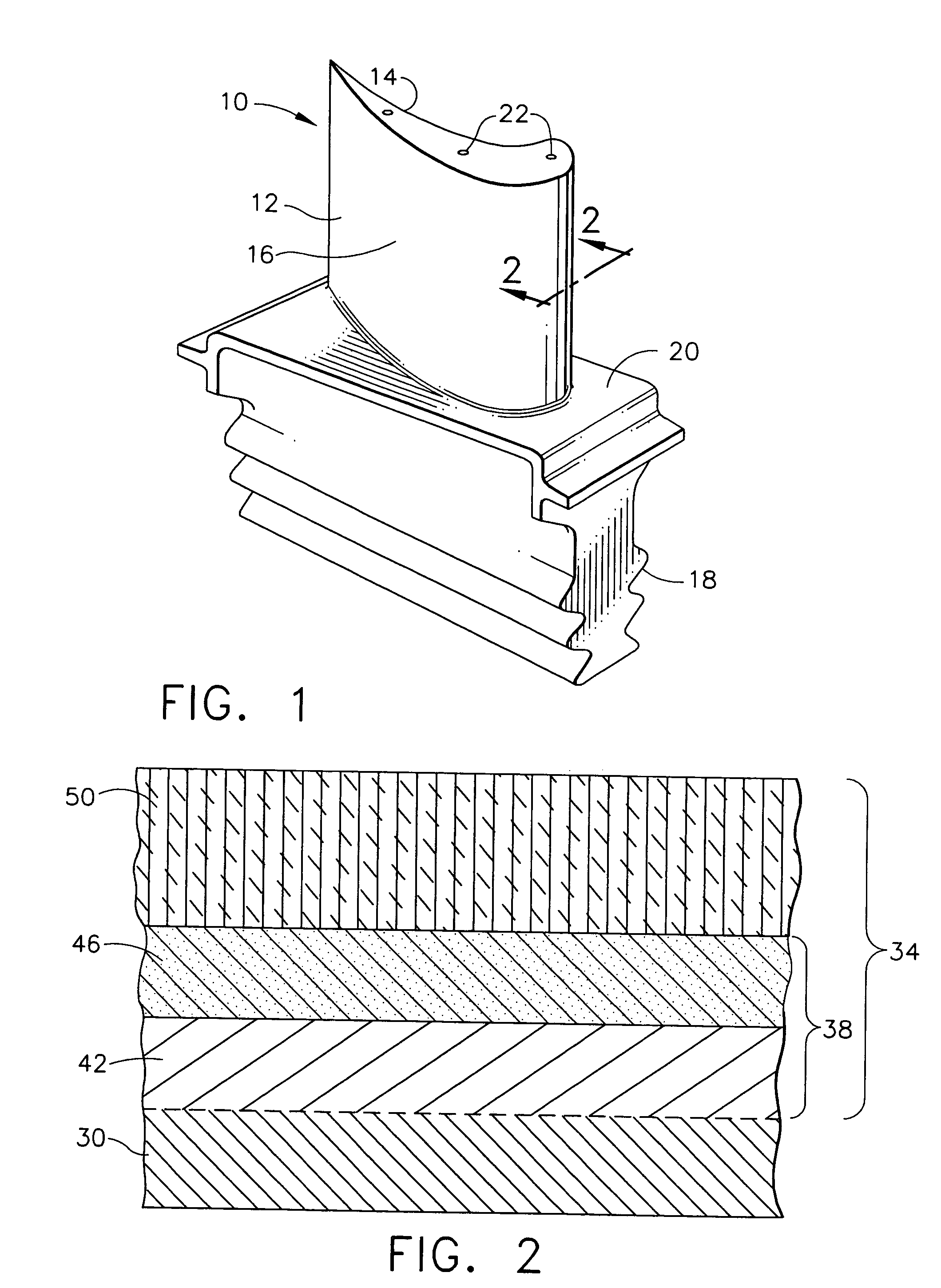Strengthened bond coats for thermal barrier coatings
a technology of bond coats and coatings, applied in the direction of magnetic recording, liquid fuel engine components, record information storage, etc., can solve the problems of thermally and chemically hostile operating environment of gas turbine engines, components formed from such alloys often cannot withstand long service exposures, and gradually deplete aluminum from the bond coat, so as to achieve the effect of increasing the strength of the bond coa
- Summary
- Abstract
- Description
- Claims
- Application Information
AI Technical Summary
Benefits of technology
Problems solved by technology
Method used
Image
Examples
Embodiment Construction
[0022]As used herein, the term “thermal barrier coating” refers to those coatings that are capable of reducing heat flow to the underlying metal substrate of the article, i.e., form a thermal barrier and usually having a melting point of at least about 2000° F. (1093° C.), typically at least about 2200° F. (1204° C.), and more typically in the range of from about 2200° to about 3500° F. (from about 12040 to about 1927° C.). Suitable thermal barrier coatings for use herein can comprise a variety of ceramic materials, including aluminum oxide (alumina), i.e., those compounds and compositions comprising Al2O3, including unhydrated and hydrated forms, various zirconias, in particular chemically phase-stabilized zirconias (i.e., various metal oxides such as yttrium oxides blended with zirconia), such as yttria-stabilized zirconias, ceria-stabilized zirconias, calcia-stabilized zirconias, scandia-stabilized zirconias, magnesia-stabilized zirconias, ytterbia-stabilized zirconias as well as...
PUM
| Property | Measurement | Unit |
|---|---|---|
| particle size | aaaaa | aaaaa |
| volume percent | aaaaa | aaaaa |
| particle size | aaaaa | aaaaa |
Abstract
Description
Claims
Application Information
 Login to View More
Login to View More - R&D
- Intellectual Property
- Life Sciences
- Materials
- Tech Scout
- Unparalleled Data Quality
- Higher Quality Content
- 60% Fewer Hallucinations
Browse by: Latest US Patents, China's latest patents, Technical Efficacy Thesaurus, Application Domain, Technology Topic, Popular Technical Reports.
© 2025 PatSnap. All rights reserved.Legal|Privacy policy|Modern Slavery Act Transparency Statement|Sitemap|About US| Contact US: help@patsnap.com


